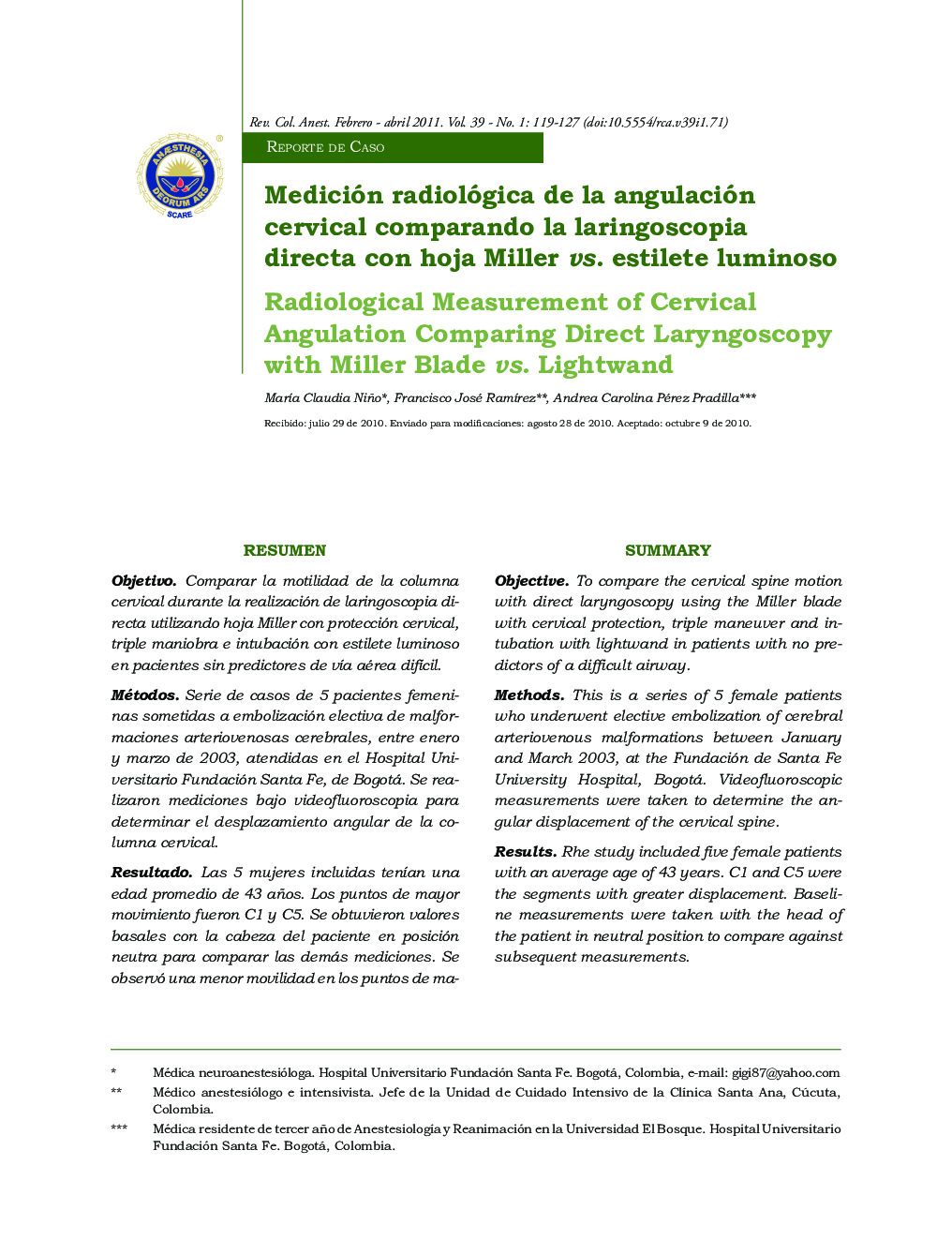| Article ID | Journal | Published Year | Pages | File Type |
|---|---|---|---|---|
| 2767963 | Revista Colombiana de Anestesiología | 2011 | 9 Pages |
RESUMENObjetivoComparar la motilidad de la columna cervical durante la realización de laringoscopia directa utilizando hoja Miller con protección cervical, triple maniobra e intubación con estilete luminoso en pacientes sin predictores de vía aérea difícil.MétodosSerie de casos de 5 pacientes femeninas sometidas a embolización electiva de malformaciones arteriovenosas cerebrales, entre enero y marzo de 2003, atendidas en el Hospital Universitario Fundación Santa Fe, de Bogotá. Se realizaron mediciones bajo videofuoroscopia para determinar el desplazamiento angular de la columna cervical.ResultadoLas 5 mujeres incluidas tenían una edad promedio de 43 años. Los puntos de mayor movimiento fueron C1 y C5. Se obtuvieron valores basales con la cabeza del paciente en posición neutra para comparar las demás mediciones. Se observó una menor movilidad en los puntos de mayor movimiento (C1 y C5) con la utilización del estilete luminoso, en comparación con la laringoscopia directa con hoja Miller (8° vs. 13,2° en C1, y 6,4° vs. 15,6° en C5). La realización de la triple maniobra y la fijación del tubo endotraqueal produjeron angulaciones menores, comparadas con las producidas durante las maniobra de intubación.ConclusiónLa intubación con estilete luminoso podría ser una alternativa útil y segura en pacientes con trastornos de la columna cervical en quienes existen limitaciones para la movilización de ésta.
SUMMARYObjectiveTo compare the cervical spine motion with direct laryngoscopy using the Miller blade with cervical protection, triple maneuver and intubation with lightwand in patients with no predictors of a difficult airway.MethodsThis is a series of 5 female patients who underwent elective embolization of cerebral arteriovenous malformations between January and March 2003, at the Fundación de Santa Fe University Hospital, Bogotá. Videofluoroscopic measurements were taken to determine the angular displacement of the cervical spine.ResultsRhe study included five female patients with an average age of 43 years. C1 and C5 were the segments with greater displacement. Baseline measurements were taken with the head of the patient in neutral position to compare against subsequent measurements.Less motion was observed at the segments with greater displacement (C1 y C5) with the use of the lightwand versus direct laryngoscopy with the Miller blade (8° vs. 13.2° at C1 and 6.4° vs. 15.6° at C5). The triple maneuver and the fixation of the endotracheal tube caused less angulation than the intubation maneuver.ConclusionsLightwand intubation could be a useful and safe alternative in patients with cervical spine disorders and movement limitations.
